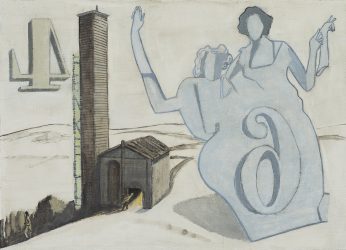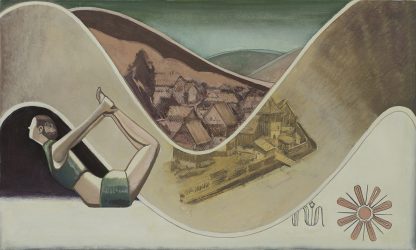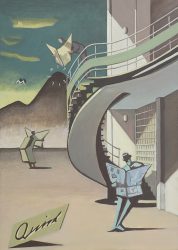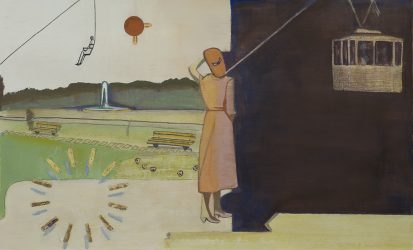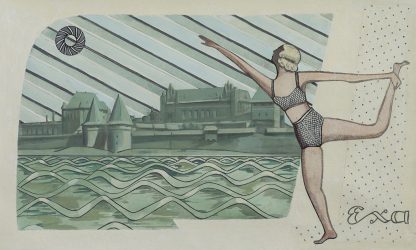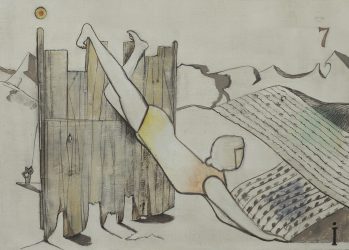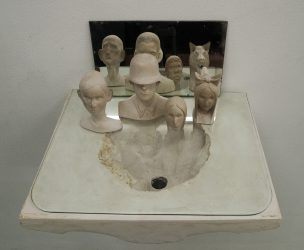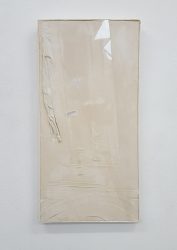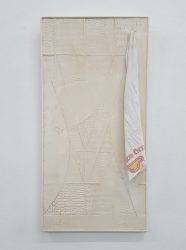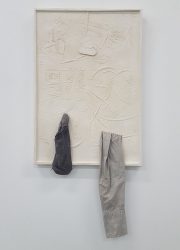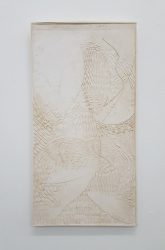Kunsthalle
Tobias Gerber (G), Diederik Gerlach
plaster drawings, sculptures, work on paper, paintings, video
11 January – 16 February 2020
last week: finissage Sunday 16 February from 13:00 – 17:00 hours
The title of the exhibition ironically refers to the German term ‘Kunsthalle’, a huge exhibition hangar where art has to comply with the vision of the curator. Diederik Gerlach (1956) and Tobias Gerber (1961) are in charge of their own Kunsthalle in the gallery.
In his work, Diederik Gerlach approaches reality from the perspective of the game, according to Schiller’s adage ‘…er ist nur da ganz Mensch wo er spielt…’ (…he is only completely a man when he plays…). He uses his own memories and experiences, and draws from visual material from the 1950s in order to construct a new reality. The paintings and works on paper have a typical palette of mixed colors and often contain peculiar elements and forms that set the image in motion. The series works on paper Elf Brüder (Eleven Brothers), Acht Schwestern (Eight Sisters) and Jaap Boon, are partly autobiographical. Jaap Boon chronicles the adventures of a 10-year-old boy, from this series also a video was made in collaboration with Eric de Vries.
Tobias Gerber shows a series of plaster drawings, made by first scratching and pressing an image into a slab of soft clay and subsequently pouring plaster over it. After setting and seperating it from the clay the drawing is left on the plaster in low relief. Gerber compares the plaster drawings to bathroom mirrors that not only show a reflection of yourself, but can also be used to reflect on art. He quotes artists like Georges Braque, Bernard Buffet, Asger Jorn and Franz Kline, but also his own father who made abstract paintings. In doing so he unites modern art history in a solidified picture gallery. Sometimes a piece of towel or sock protrudes from the plaster, daily life is thus integrated in the work. Gerber also uses German – Dutch word games in the plaster rectangles, such as Ohrloch (meaning ear hole in German, but war in Dutch) and tot morgen (until tomorrow in Dutch and death tomorrow in German). Because of their creamy white colour, the artworks appear to be identical, but on closer inspection the various styles and depictions start to emerge from the surface.


